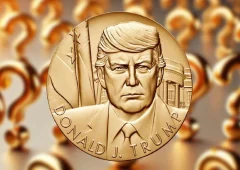Payment Giant Stripe Prepares Stablecoin Launch Amid Crypto Expansion
27.04.2025 8:00 2 min. read Alexander Stefanov
Stripe is officially making its move into the stablecoin space, signaling a new chapter for the global payment giant.
CEO Patrick Collison confirmed on April 25 that the company is developing a stablecoin-based product, a project that had reportedly been under internal discussion for nearly a decade.
Rather than rushing to market, Stripe waited for what Collison described as the right conditions to launch. Although full details are still under wraps, early indications suggest the first phase will focus on markets outside the U.S., EU, and UK.
This expansion follows Stripe’s $1.1 billion acquisition of Bridge earlier this year, a firm specializing in stablecoin infrastructure. Bridge’s technology is set to underpin Stripe’s upcoming digital currency offerings, providing the backbone for faster and cheaper cross-border transactions — a natural evolution for a company already processing billions across 135 currencies worldwide.
Stripe’s timing aligns with a broader trend in the financial sector, as stablecoins gain traction among both fintech giants and traditional institutions. Players like PayPal have already stepped into the space, and analysts at Standard Chartered predict the stablecoin market could surpass $2 trillion by 2028 if regulatory clarity continues to improve.
In the U.S., lawmakers are advancing two major pieces of legislation — the STABLE Act and the GENIUS Act — aimed at establishing stricter rules for stablecoins, including liquidity standards and anti-money laundering safeguards. These efforts could boost confidence in dollar-backed digital assets and solidify the greenback’s leadership in the evolving world of digital finance.
-
1
Fortune 500 Embrace Stablecoins as Adoption Surges Across U.S. Businesses
11.06.2025 19:00 2 min. read -
2
Elon Musk’s X Prepares to Enter the Fintech Arena
20.06.2025 13:00 1 min. read -
3
China Pushes Digital Yuan Expansion as Global Currency Power Shifts
19.06.2025 17:00 1 min. read -
4
Fiserv to Launch FIUSD Stablecoin Across Its Massive Banking Network
23.06.2025 21:00 1 min. read -
5
Mastercard Integrates Chainlink to Power Direct Crypto Access for Cardholders
25.06.2025 18:00 1 min. read
Coinbase to Launch U.S. Perpetual-Style Futures on July 21
Leading crypto exchange Coinbase (COIN) is set to launch perpetual-style futures contracts in the United States starting July 21, becoming one of the first regulated entities to offer a product that closely mirrors globally popular offshore perpetuals.
Robinhood Expands Crypto Futures With XRP and Solana Micro Contracts
Zero-commission brokerage Robinhood has expanded its cryptocurrency futures offerings by launching micro futures contracts for XRP, Solana (SOL), and Bitcoin (BTC).
GF Securities Becomes First in Hong Kong to Issue Tokenized Securities On-Chain
In a landmark move for the city’s digital asset strategy, GF Securities (Hong Kong) has become the first securities firm in Hong Kong to issue tokenized securities fully on-chain via HashKey Chain.
BIS Slams Stablecoins, Calls Them Ill-Suited for Modern Monetary Systems
Stablecoins are failing where it matters most, says the Bank for International Settlements (BIS), which sharply criticized the asset class in its latest annual report.
-
1
Fortune 500 Embrace Stablecoins as Adoption Surges Across U.S. Businesses
11.06.2025 19:00 2 min. read -
2
Elon Musk’s X Prepares to Enter the Fintech Arena
20.06.2025 13:00 1 min. read -
3
China Pushes Digital Yuan Expansion as Global Currency Power Shifts
19.06.2025 17:00 1 min. read -
4
Fiserv to Launch FIUSD Stablecoin Across Its Massive Banking Network
23.06.2025 21:00 1 min. read -
5
Mastercard Integrates Chainlink to Power Direct Crypto Access for Cardholders
25.06.2025 18:00 1 min. read


